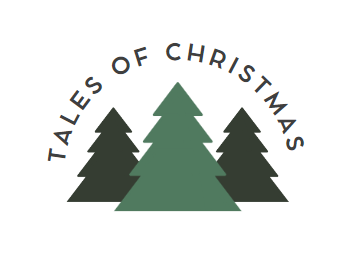Christmas Eve, a night brimming with enchantment and anticipation, carries a special place in the hearts of people worldwide. It’s a moment when families unite, and traditions are honored with unshakable devotion. This magical evening is celebrated diversely, each tradition reflecting the unique culture and history of the region. In this article, we embark on a journey to explore the rich tapestry of Christmas Eve traditions, their historical origins, how they have evolved over time, and what they represent in the modern world.
The Rich Tapestry of Christmas Eve Traditions
The origins of Christmas Eve as a celebration can be traced back to early Christian traditions. In various cultures, Christmas Eve has evolved into a night for families to gather, commemorating the birth of Jesus, sharing a festive meal, and exchanging gifts. However, as this tradition spread across the world, it adapted and transformed into various, equally beautiful customs.
Traditional Christmas Eve Celebrations
- Midnight Mass and Nativity Scenes: In many parts of Latin America and Europe, attending Midnight Mass remains a cornerstone of Christmas Eve. The hallowed churches come to life with carols, candlelight, and the retelling of the Nativity story through intricate nativity scenes. Families unite to share in this deeply spiritual experience.
- Feast of Seven Fishes (La Vigilia): In Italy, the “Feast of Seven Fishes” is a cherished tradition. Families congregate for a sumptuous seafood feast, featuring seven different fish dishes, symbolic of the seven sacraments. This feast is a testament to Italy’s deep-rooted Catholic traditions.
- Yule Lads in Iceland: In Iceland, children eagerly await the arrival of the “Yule Lads,” a group of 13 mischievous creatures who visit homes in the 13 days leading up to Christmas. Each day, children place their shoes by the window, hoping to receive small gifts or candy if they’ve been good or a potato if they’ve been naughty. This charming tradition is a unique blend of folklore and merriment.
- La Befana in Italy: On the night of January 5th (Epiphany Eve), Italian children eagerly await the arrival of La Befana, a friendly witch who delivers gifts to well-behaved children and leaves coal for the naughty ones. This enchanting character is a testament to Italy’s enduring folklore.
Christmas Eve Foods From Around the World
In addition to unique traditions, the food served on Christmas Eve is a significant part of the celebration, and it often reflects the cultural and historical context of the region. Here are some popular Christmas Eve foods from around the world:
-
Bacalao a la Vizcaína (Spain): In Spain, it’s common to enjoy Bacalao a la Vizcaína, a flavorful dish featuring salted codfish cooked with a rich tomato and red pepper sauce. It’s often accompanied by vegetables and hard-boiled eggs.
-
Tamales (Latin America): Tamales are a staple of many Latin American Christmas Eve feasts. These delicious parcels of masa (corn dough) are filled with various ingredients like meats, cheese, or vegetables and wrapped in corn husks or banana leaves.
-
Pierogi (Poland): Poland celebrates Christmas Eve with a hearty meal that often includes Pierogi, which are dumplings filled with ingredients like potatoes, cheese, cabbage, or meat. They are usually served with a dollop of sour cream.
-
Kutia (Ukraine): In Ukraine, Kutia is a traditional Christmas Eve dish. It’s a sweet porridge made with wheat berries, honey, poppy seeds, and sometimes dried fruits. It symbolizes the hope for a sweet and prosperous year ahead.
-
KFC (Japan): In Japan, a quirky tradition has emerged where people celebrate Christmas Eve by ordering KFC (Kentucky Fried Chicken). This unexpected choice has become so popular that KFC outlets in Japan take reservations months in advance.
Christmas Eve: Changes Over Time
While these traditions have deep historical roots, they haven’t remained static. Christmas Eve customs have evolved over time due to various influences. Globalization, modernization, and changing social norms have all played a role in shaping the ways we celebrate this special evening.
Christmas Eve in the Modern World
In today’s modern world, Christmas Eve traditions continue to hold a special place in our hearts. The essence of togetherness and the joy of giving persist, even as some customs have adapted to reflect contemporary values and preferences. The impact of technology and commercialization has brought new dimensions to these traditions. From online Advent calendars to virtual celebrations with loved ones who may be far away, technology has become an inseparable part of modern Christmas Eve celebrations.
Despite these changes, the enduring significance of Christmas Eve remains a testament to the power of tradition and the magic of the holiday season. It’s a night that bridges generations and connects us to our cultural heritage. Whether you’re attending Midnight Mass, feasting on seafood, waiting for La Befana, or celebrating with your own cherished customs, Christmas Eve is a time to come together and share the spirit of love and generosity.
In a world that is becoming increasingly interconnected, we find solace and connection in our unique traditions and in the opportunity to learn about and appreciate the diverse customs of others. The beauty of Christmas Eve lies not only in what makes it special to you but also in the rich and varied ways it is celebrated around the world.
As we approach this Christmas Eve, let us embrace the old and the new, the familiar and the foreign, and reflect on the enduring significance of this magical night. It’s a time for togetherness, love, and the promise of a brighter future, a promise that has transcended time and will continue to do so for generations to come. Let us remember that the true magic of Christmas Eve lies in the universal themes of love, hope, and the joy of sharing with our loved ones.






